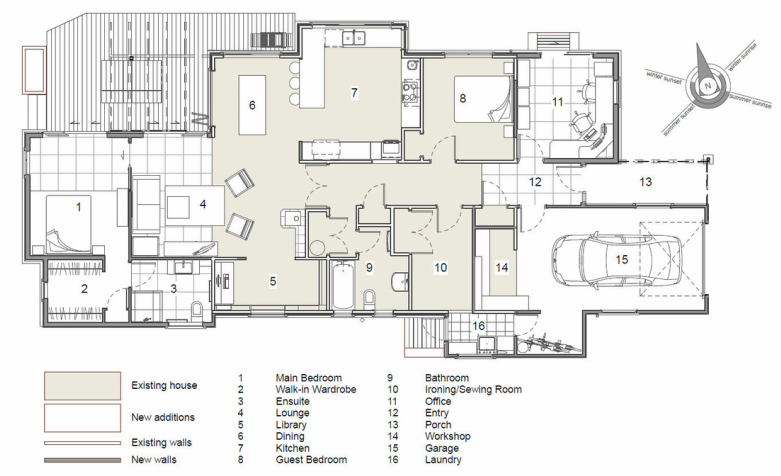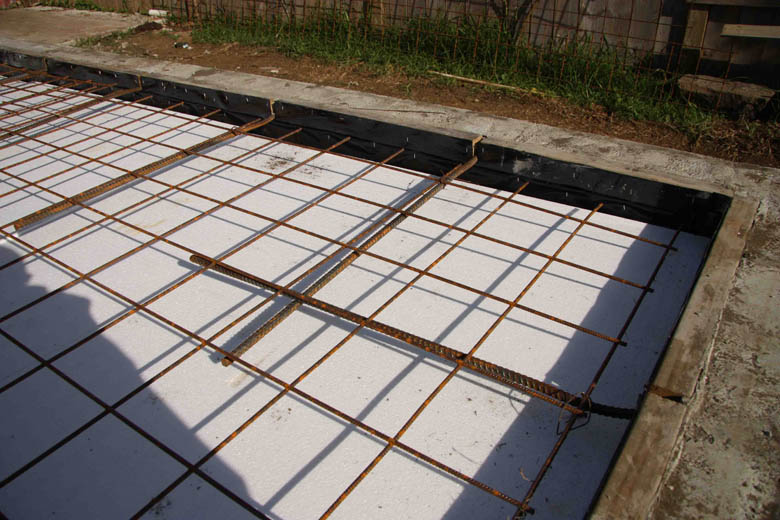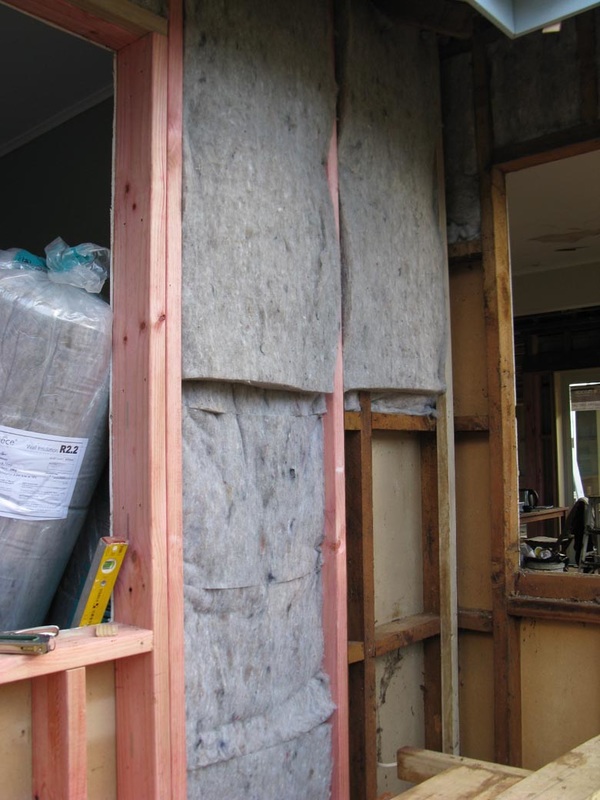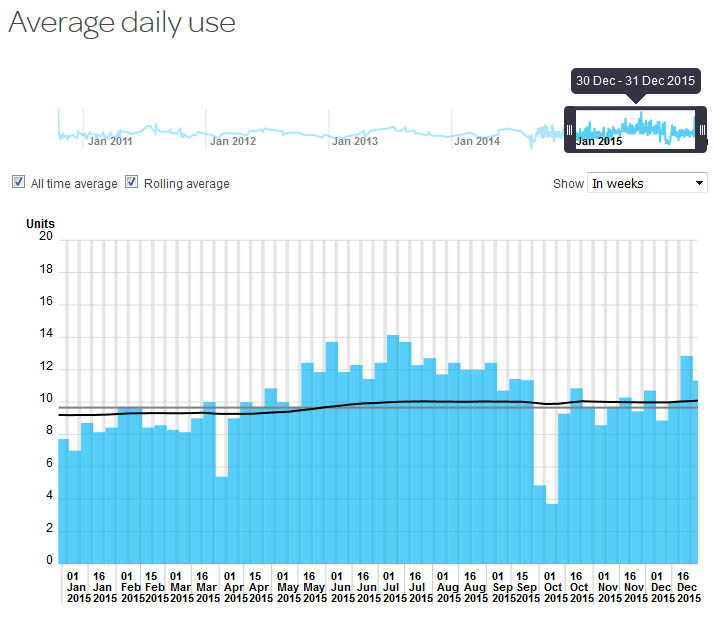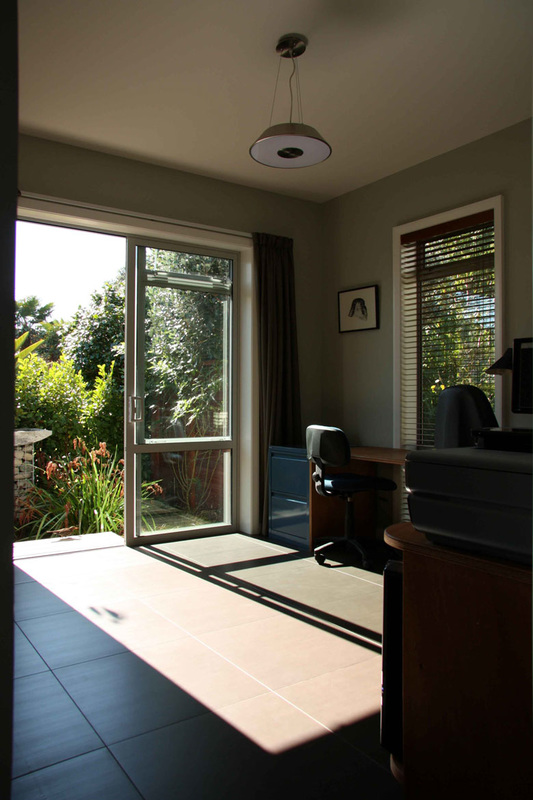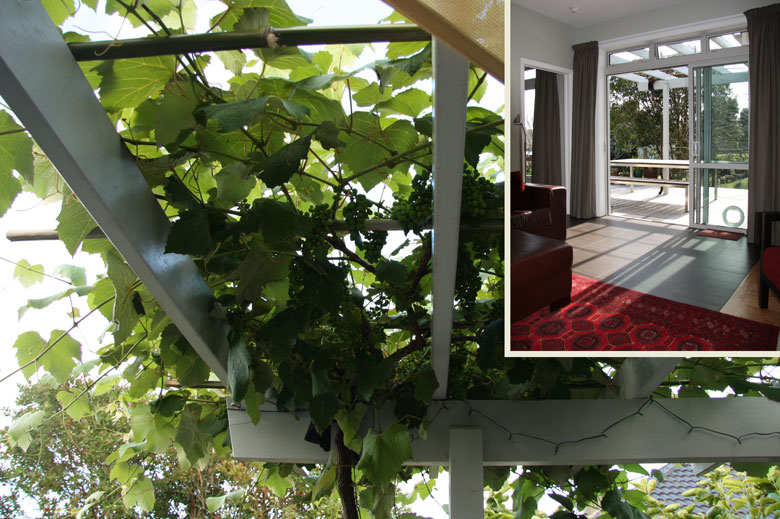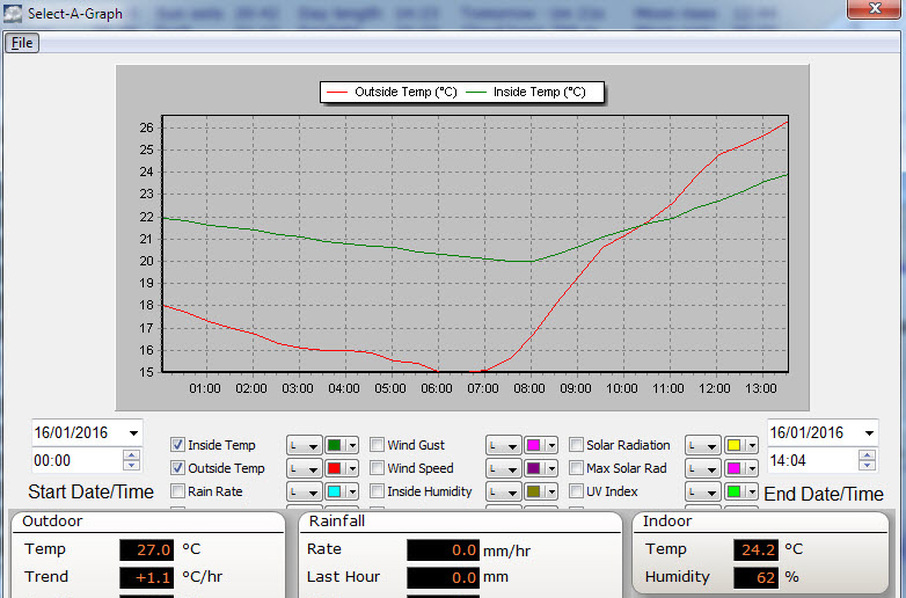|
Working for several years from a home office in an extended and extensively upgraded ex-state house has provided me with a great opportunity to monitor performance and see what works well and what doesn’t; knowledge that can be applied to subsequent design projects.
Location: Three Kings, Auckland Building system for new additions: timber-framed on insulated concrete slab Age: original state house late 1940s, additions and alterations 2009 Project period: started late March 2009, completed mid July 2009 (some interior work plus decks and extensive landscaping etc. completed subsequently) The Brief: To incorporate passive solar designed additions resulting in a house that was comfortable all year round, with good natural light and low energy and water use. We wanted a spacious outdoor entertaining area and easy connection to backyard herb and vegetable gardens. An office near the front of the house for my architectural design practice was also important. Building waste was to be kept to a minimum so as much of the existing room layout as possible was to be preserved. The Design: We added to the existing house at both ends. The whole exterior was re-clad and the existing timber joinery was replaced with double glazed aluminium framed units. Energy efficiency and an all-year comfortable indoor environment were primary goals. This was achieved with passive solar design, which allows the sun deep into the house in winter but keeps it out during summer, combined with high levels of insulation. |
|
We kept the simple hip roof style to reflect the style of other houses in the area. The interior deliberately displays the hybrid between old and new. Original doors are panelled, whereas the new doors in the rear addition are plain; original floors are polished rimu T&G, whereas new floors are either tiled or carpeted over the concrete slab. The new ceilings also feature square stopping in contrast to the scotia finish of the original portion of the house. There is some blurring of these distinctions where two of the original panelled doors have been re-used in the new entry and the square stopping has extended into the original dining room, but generally no attempt was made to make the old look new or the new look old.
Demolition and Waste Minimisation:
Construction Notes:
|
See Remuera House for an improvement on the edge insulation system that was used here
|
Energy Performance:
140mm thick external walls allowed us to fit in extra wool/polyester wall insulation with one layer of R2.2 and an additional one of R1.2 alongside. In the ceilings, a double layer of R2.2 wool/polyester ensured a high level of insulation. The concrete slab has 50mm polystyrene under it and polyester pads were inserted between the existing floor joists to complete the thermal envelope. |
|
Averaged annual electricity use is less than 10kwh per day, with monthly average lows under 8kwh during summer and maximums just over 12 in winter. Totals for each year are under 3600kwh. This is for two occupants plus occasional guests and also includes a home office that uses a base of 7.5kwh per week, excluding any heating.
Summer indoor temperatures stay below 25° even when outside temperatures reach 29°. |
|
Due to the heat absorbed by the tiled concrete floor after sunny days in winter, the living area temperatures stay above 20° throughout the evening, even if temperatures drop to below 10° outside. As a result, no heating is required on such days. The fireplace is used after cloudy days but usually only to bring the temperature up from 17° or 18°. We installed the smallest model Metro woodburner fireplace and this has been more than adequate for the lounge/dining/kitchen area and, if well fuelled up, doors to other parts of the house need to be opened.
|
|
At the time we built, the price premium on double glazed aluminium framing that was thermally broken was too high for our budget but, as these are now much closer in price to standard double glazing, using anything less is not recommended. These units have low thermal conductance connectors between the inner and outer aluminium extrusions and significantly reduce heat loss through the frame.
Although not in an ideal position, the original pergola post was preserved as it had an established grape vine on it, which is ideal for summer shading of the outdoor area and provides delicious grapes each summer. The vines require cutting back each autumn, allowing maximum sunlight into the house during winter (see inset below). |
|
Keeping Cool:
With the focus firmly on warming houses up in winter, summer overheating is, to a large extent, overlooked. Just as passive solar design can be used to let the sun in during winter, it can also keep it out during summer. In conjunction with high levels of insulation and correct eaves sizing on the northern side, another contributing factor to keeping a house cool is the minimisation of west facing windows, to prevent overheating by late afternoon sun. Robust passive solar design means that even in mid-summer when the house is closed up (with only some high-level fanlight windows open), indoor temperatures can be 3-5° cooler than temperatures in the shade outside. The thermal mass which helps store warmth during winter also moderates temperature highs and lows during summer, as can be seen in the graph below. |
|
The importance of good levels of insulation can be best demonstrated by a visit into a roof-space on a warm summer day. Even on the case study house, which has a Gull Grey roof (light coloured and thus cooler), the temperature in the roof-space becomes quite high, making it obvious how important the extra thick ceiling insulation is for keeping this heat out of the living space. There is an international ‘white roofs’ movement which promotes the use of light coloured roofs to reflect heat back into space, thus mimicking the action of polar ice caps, thereby reducing the global warming impact of buildings. White Roofs
There are other reasons not to have dark coloured steel roofs. They expand and contract more, leading to potential noise during warming and cooling and also adding stress to fixing seals and flashings. |
|
© 2016 - Equinox Design Ltd - All Rights Reserved
|
